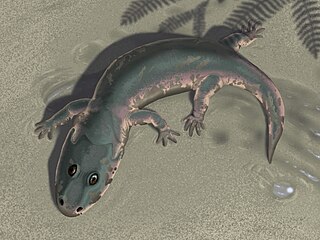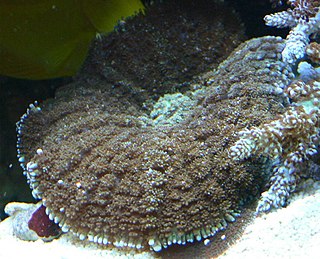
The Hawker Siddeley Nimrod is a retired maritime patrol aircraft developed and operated by the United Kingdom. It was an extensive modification of the de Havilland Comet, the world's first operational jet airliner. It was originally designed by de Havilland's successor firm, Hawker Siddeley; further development and maintenance work was undertaken by Hawker Siddeley's own successor companies, British Aerospace and, later, BAE Systems.

Sir Ernest Henry Shackleton was an Anglo-Irish Antarctic explorer who led three British expeditions to the Antarctic. He was one of the principal figures of the period known as the Heroic Age of Antarctic Exploration.

Actiniidae is the largest family of sea anemones, to which most common, temperate, shore species belong. Most members of this family do not participate in symbioses with fishes. Three exceptions are the bubble-tip anemone, snakelocks anemone and Urticina piscivora.

Zoanthids are an order of cnidarians commonly found in coral reefs, the deep sea and many other marine environments around the world. These animals come in a variety of different colonizing formations and in numerous different colors. They can be found as individual polyps, attached by a fleshy stolon or a mat that can be created from small pieces of sediment, sand and rock. The term "zoanthid" refers to all animals within this order Zoantharia, and should not be confused with "Zoanthus", which is one genus within Zoantharia.

Cryobatrachus is an extinct genus of temnospondyl amphibian from the Early Triassic of Antarctica. The type species is Cryobatrachus kitchingi. It is known from a partial skull and an imprint of the skull roof, both found in the Fremouw Formation of the Transantarctic Mountains at about 85° south latitude and described in 1974. Many small bone fragments have also been identified, although they cannot be attributed with certainty to C. kitchingi. Cryobatrachus has been classified in the family Lydekkerinidae, as it is similar in appearance to the genus Lydekkerina from South Africa. Because only a small number of features distinguish it from other lydekkerinids, Cryobatrachus kitchingi has more recently been considered a nomen dubium, meaning that its distinction from other better-known species may be unwarranted.

Rhodactis is genus of mushroom corals which are characterized by large individual polyps that are often reminiscent of a mushroom. Rhodactis are related to stony corals but do not produce a stony skeleton.

Alicia is a genus of sea anemones in the family Aliciidae and contains the following species:

Stenoplax is a genus of polyplacophoran molluscs in the family Ischnochitonidae.

Anthothoe is a genus of sea anemones in the family Sagartiidae.

Parazoanthidae is a family of cnidarians.

Parazoanthus is a genus of anemone-like anthozoans in the order Zoantharia.

Heteractis malu, also known as the malu anemone, delicate sea anemone or white sand anemone, is a species of sea anemone in the family Stichodactylidae.
Sand anemone may refer to:

Zoanthus is a genus of anthozoans in the family Zoanthidae. It is the type genus for its family and order.

Paracorynactis is a genus of corallimorphs from the western Indo-West Pacific. They are specialized predators of echinoderms, and are notable for preying on the destructive crown-of-thorns starfish among others. The genus is monotypic with the single species, Paracorynactis hoplites.

Palythoa is a genus of anthozoans in the order Zoantharia.

Brachycnemina is a suborder of zoanthids in the order Zoantharia. Genetic analysis has been used to suggest Brachycnemina is a monophyletic group diverging within the paraphyletic Macrocnemina.

Parazoanthus darwini is a species of macrocnemic zoanthid first found in the Galapagos. It can be distinguished by its association with sponges, by having about 24–30 tentacles and polyps embedded in a well-developed coenenchyme.

Pachycerianthus is a genus of marine tube-dwelling anemones in the family Cerianthidae.

Hermatobates is a genus of wingless marine bugs placed as the sole genus in the family Hermatobatidae that are sometimes known as coral-treaders. They are quite rare and known only from coral reefs in the Indo-Pacific region. During low tide, they move over the water surface not unlike the more familiar water-striders around coral atolls and reefs and stay submerged in reef crevices during high tide.

















